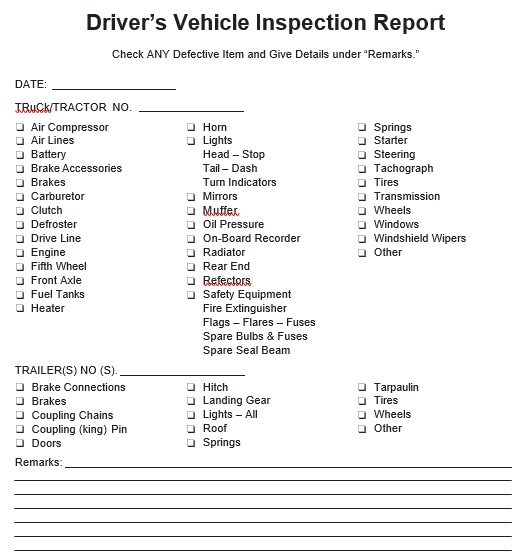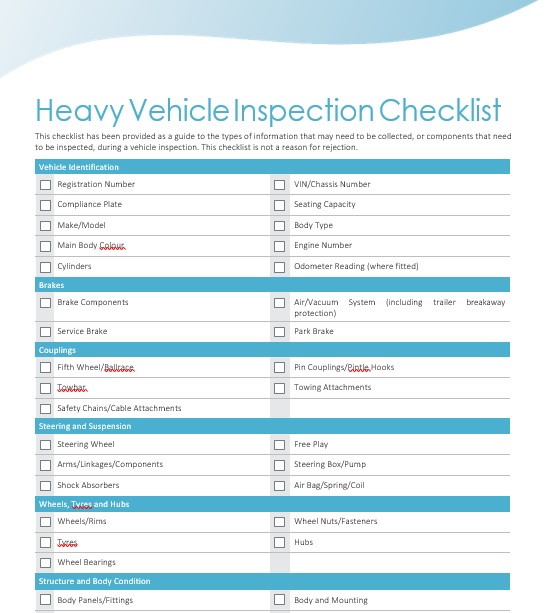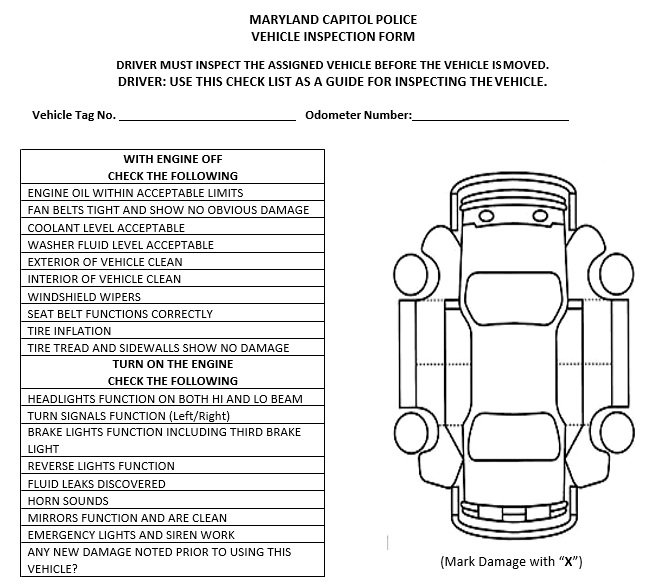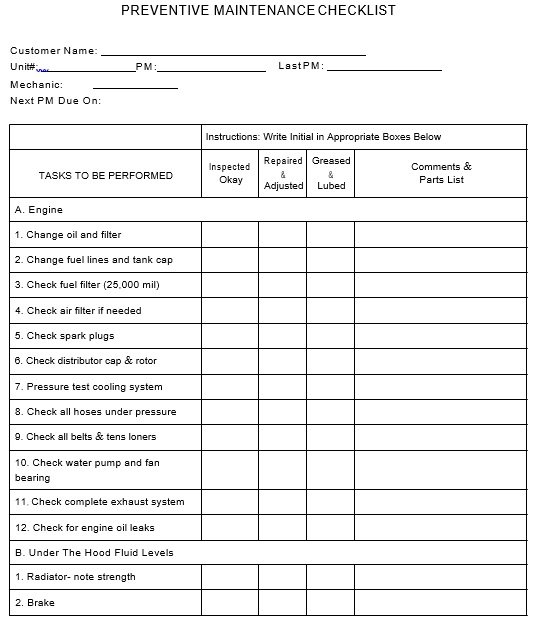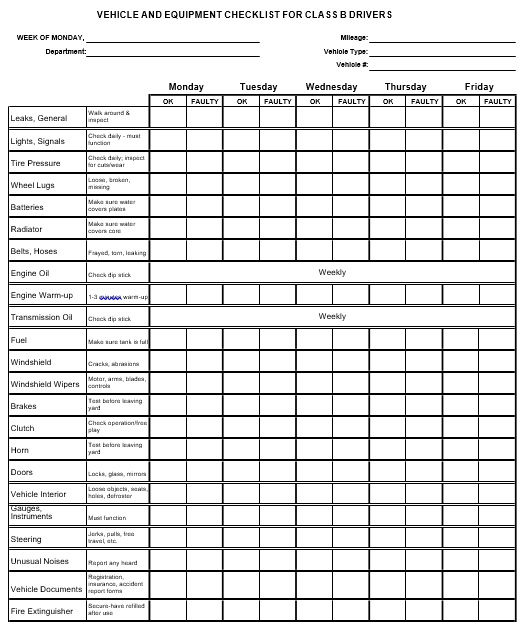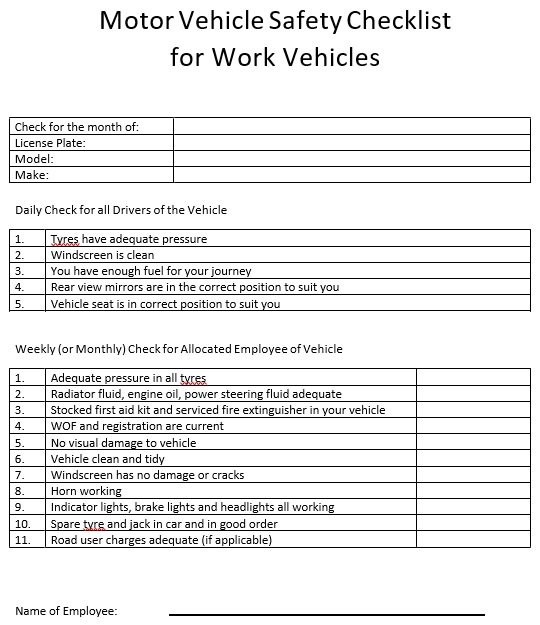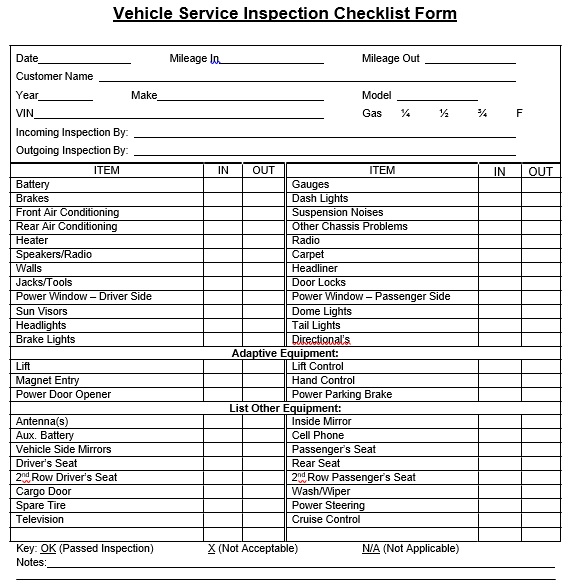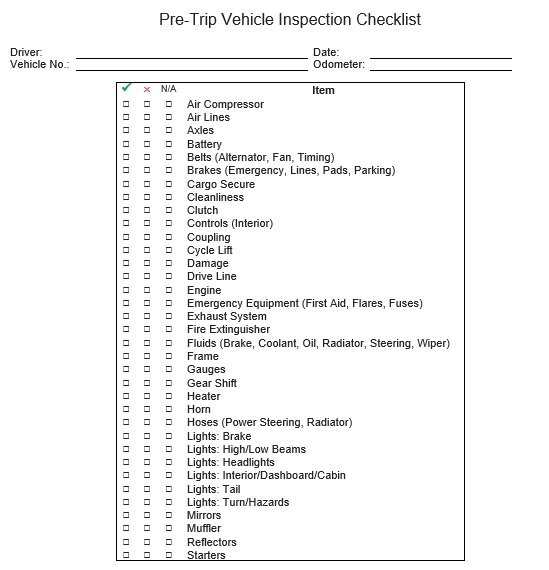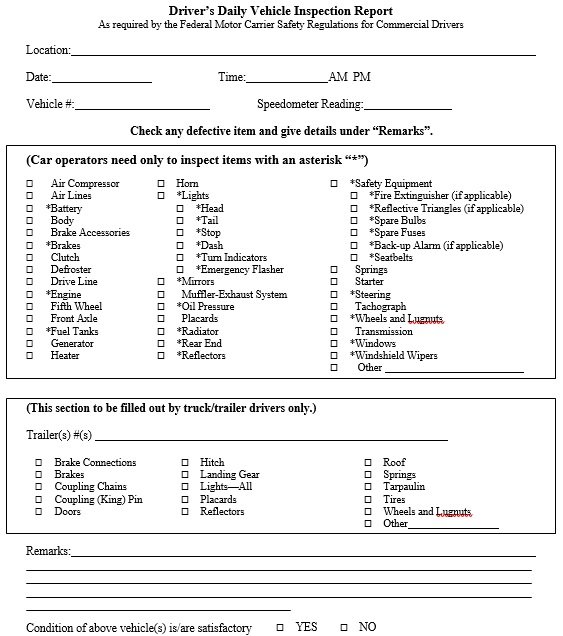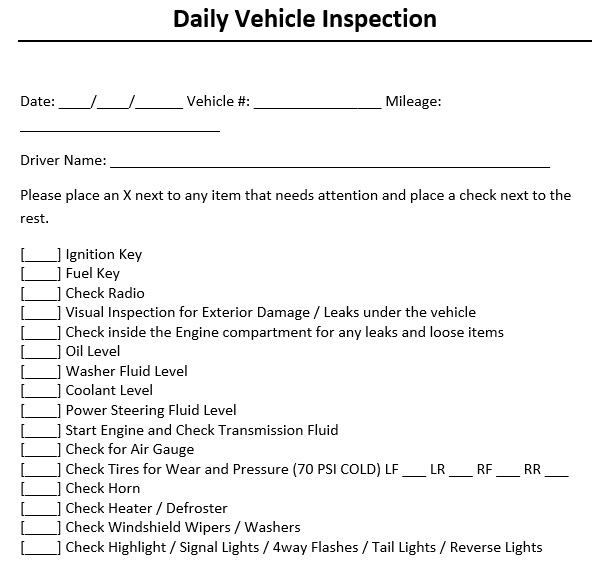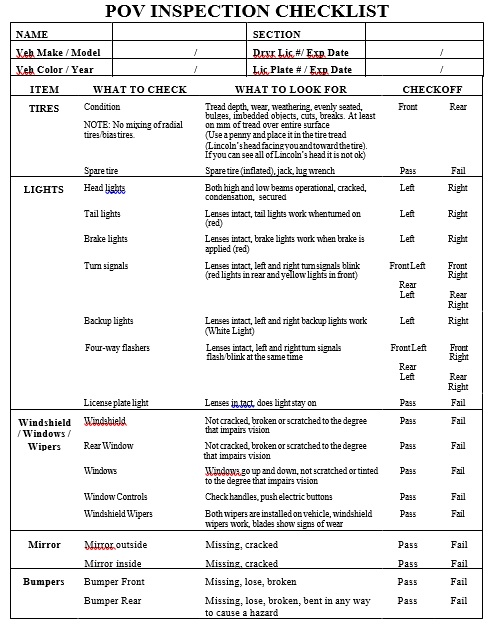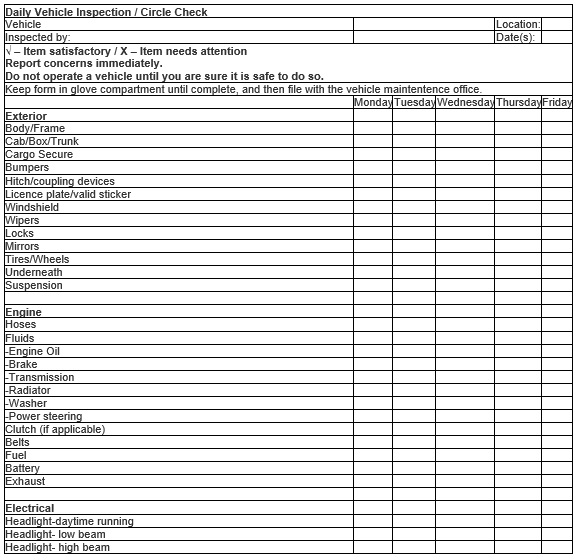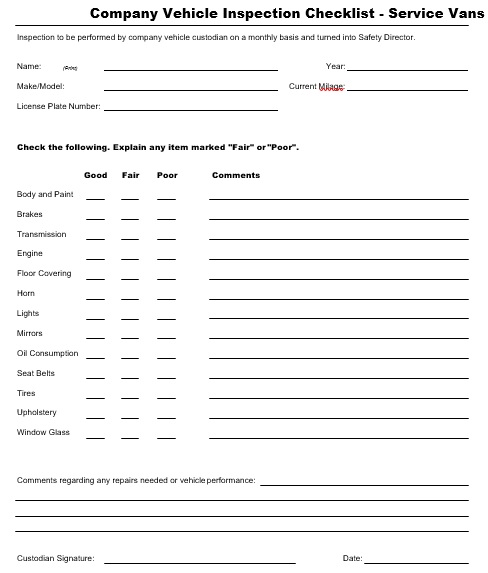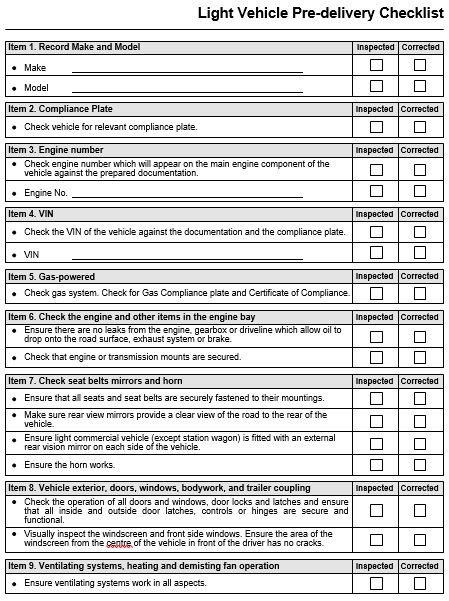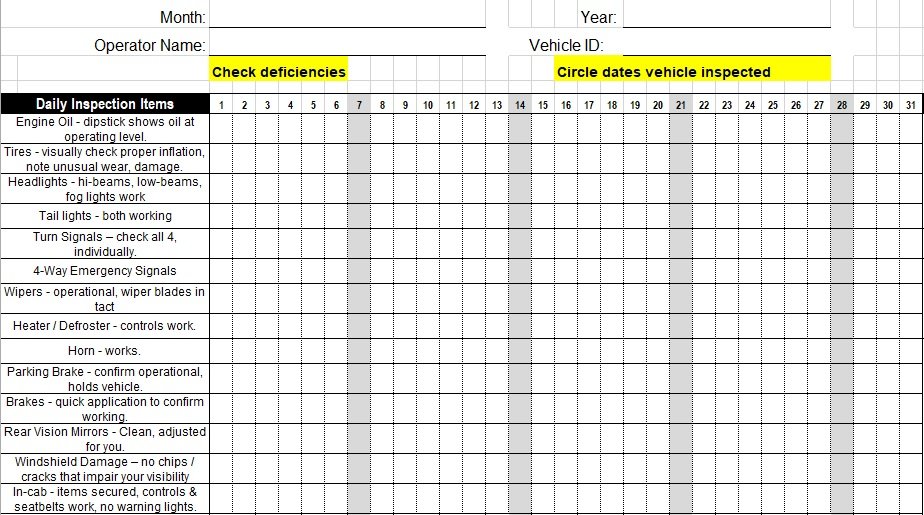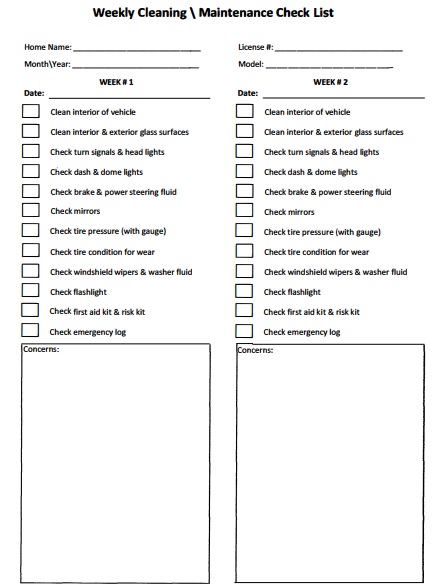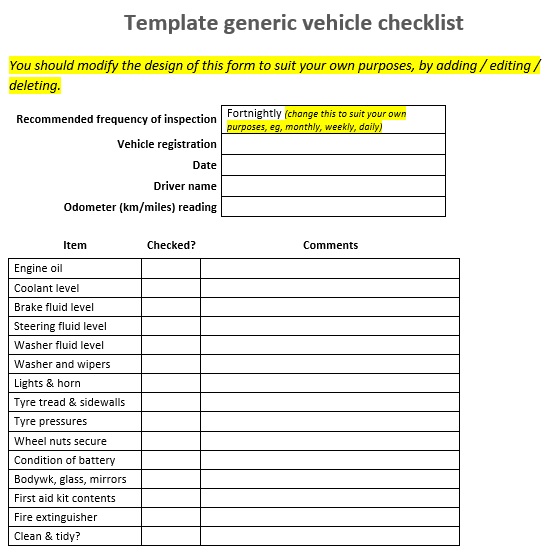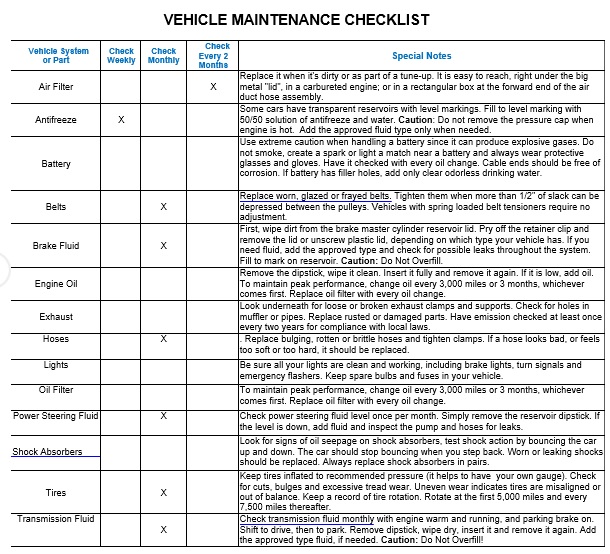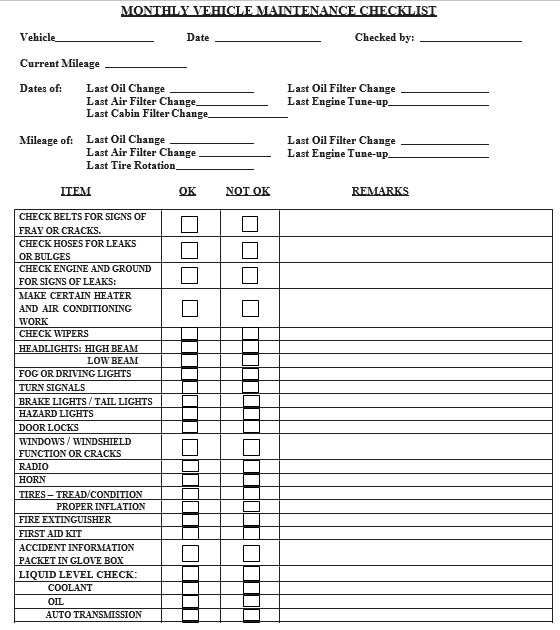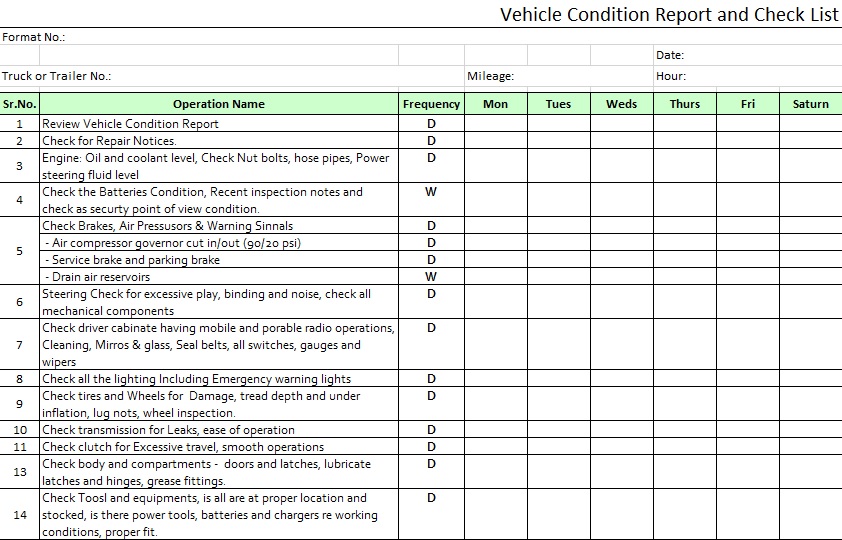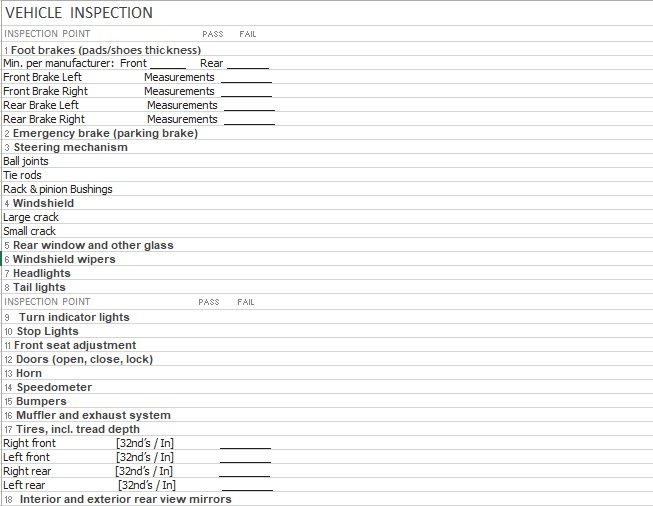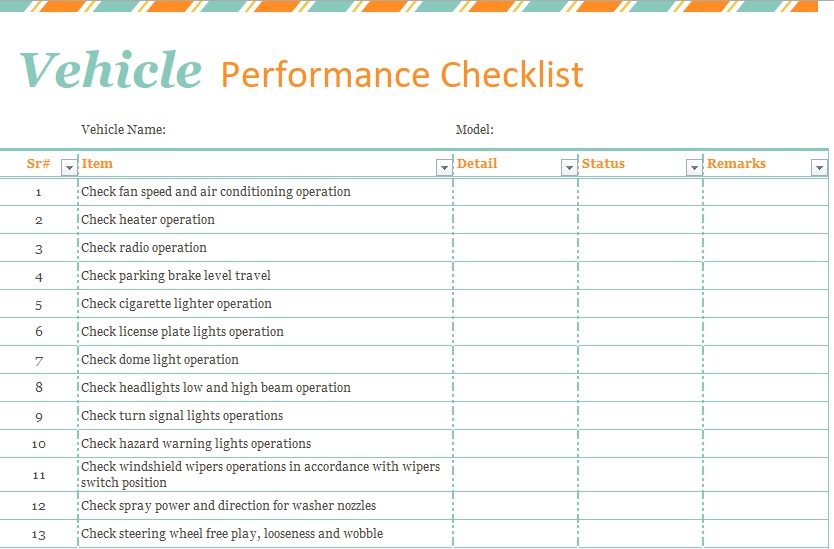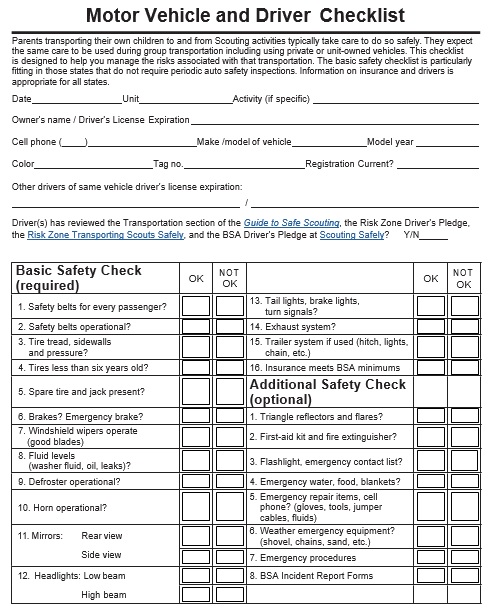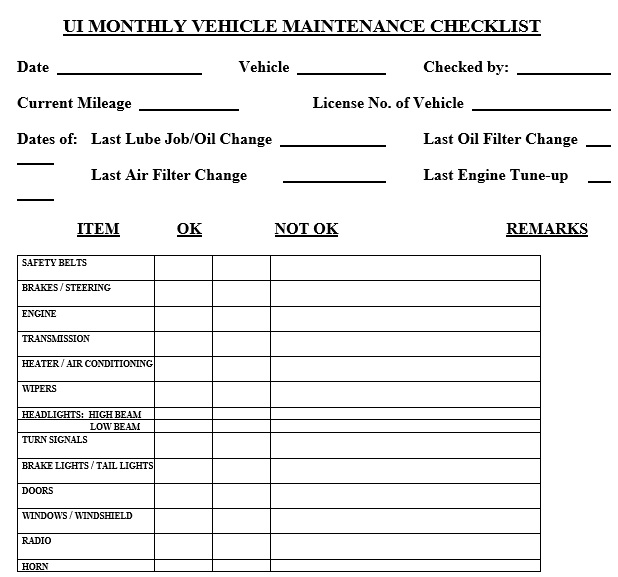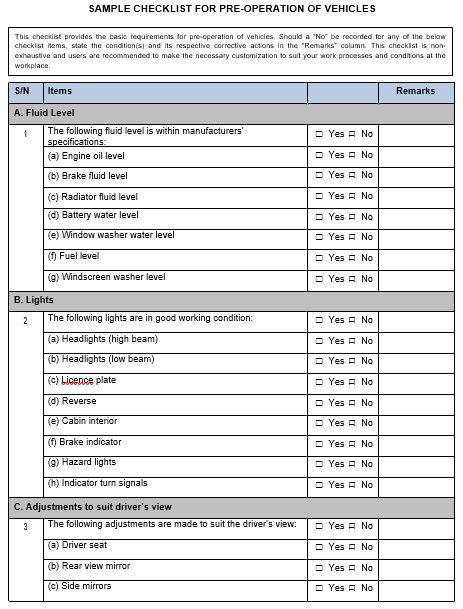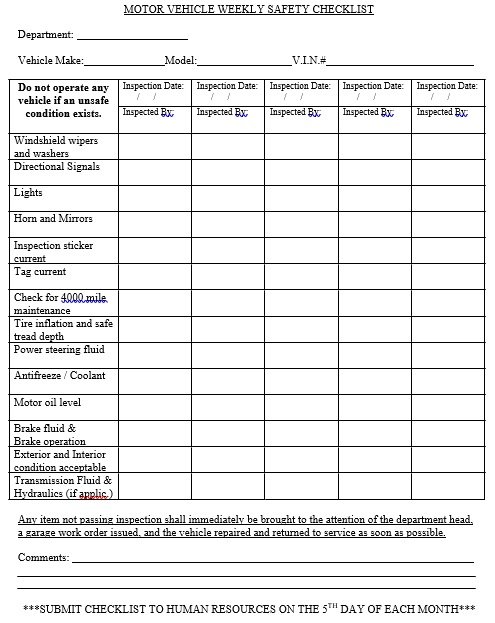A vehicle checklist template is a document used by the inspector to present a vehicle checklist that determines the defects and mechanical issues of a vehicle. Along with vehicle checklist the inspector also provides a list of recommendations and rating of your vehicle’s overall roadworthiness. If you own a personal vehicle, you should keep your own vehicle checklist handy.
Table of Contents
- 1 The advantages of using a vehicle checklist:
- 2 What to include in a vehicle checklist?
- 3 How to check your vehicle checklist?
- 4 Which parts of vehicle should include in your vehicle checklist?
- 5 What is the difference between multi-point inspection checklist and vehicle inspection checklist?
- 6 Conclusion:
- 7 Faqs (Frequently Asked Questions)
The advantages of using a vehicle checklist:
A vehicle checklist is used by the inspectors when they are performing vehicle checks. You can use different types of vehicle checklists. For example, the mechanics can use a vehicle maintenance checklist to check the parts and functions of the vehicle.
You should also have to make sure that the vehicle is functioning properly on daily basis. The inspector begins with a blank vehicle checklist when you get your vehicle checked up. Below are the benefits of using a vehicle inspection checklist;
- The every part of the vehicle gets checked by listing all the things in the checklist that need inspection.
- This document tells the inspector which parts of your vehicle require maintenance work, replacement, or repair. The vehicular parts must undergo inspection to make sure optimal vehicle performance.
- When the vehicle is in use, it assures the safety of passengers.
- It makes the inspection easier for you and the inspector.
What to include in a vehicle checklist?
For each of your businesses service vehicles, it is essential to have your vehicle undergo a regular checkup at least time each year. This keeps them always in prime condition. You should include the following details in your vehicle checklist;
Vehicle inspector’s details:
It is important to write down the details of the inspector who will perform the inspection of the vehicle. In this way, this makes it easier to determine the person in charge of the inspection.
Vehicle operator’s details:
Here you have to record your details as the vehicle’s operator. It’s better to link yourself to your vehicle when possible. However, this is not really necessary.
Vehicle’s details:
Before starting on your vehicle’s inspection, it is the last section to record on your car inspection checklist. To write down the details of your vehicle, Use the fields on your vehicle checklist. This makes it easier for you and your inspector.
How to check your vehicle checklist?
Consider the following tips while making your own vehicle inspection checklist;
- Firstly, determine the purpose that why you are creating a checklist.
- The vehicle parts and their functions should be known so that you know what to check on daily basis. Organize your checklist by making a list of these things.
- Your checklist should also include the instructions for using the checklist or how to conduct a vehicle check. Make use of simple and clear language so that the inspector can understand it easily.
- Don’t forget to proofread your final work in order to ensure that you don’t mess up any of the important points.
- You can check out some checklist examples for your reference. You can use these references while making your own.
Which parts of vehicle should include in your vehicle checklist?
The parts of vehicle your vehicle checklist include are;
Tires:
For tires, the common inspection includes tread, tire wear, and pressure. A tire gauge is sued for a pressure. Today, Radial tires always appear somewhat flat. This is because they have tread mushrooms at the bottom. Moreover, they make a better contact with the road.
Some vehicles use run-flat tires. These always appear inflated even when they are low in air. The new cars also ultimately lose air in their tires. Therefore, you should focus on tire-pressure warning light on the dashboard.
Tire tread:
After driving some miles into your car, it’s time to look at the tire treads. Put a quarter upside down into the groove to test whether you still have good tire treads. You have to replace your tires soon if the entire head shows. In addition, you can also buy a tread-depth gauge from any auto parts shop. A depth measuring less than 1/8 of an inch is considered potentially illegal and unsafe in most states.
Batteries:
Batteries undergo following tests;
- Voltage checks
- Securing tie-downs and charge
- Discharge load checks
When your batteries have reached their 4th year of service or about the time your new-car warranties end then you should replace your vehicle’s batteries.
Steering and suspension:
The inspection of power steering belts, fluid levels, fluid leaks, and pumps is also necessary. After some time, steering systems generate problems. When one problem occurs, a warning light on the dashboard provides you a signal. However, electric power steering is more common today. They remove some issues with drive belts and hydraulic fluids. The traditional power steering vehicles, if the belt becomes worn out or loose, may leak fluids or screech.
Safety lights:
They are another important item in a vehicle checklist and include headlights, hazard lights, turn lights, and brake lights. All these components have their own special functions. Also, new cars have burned-out or lights. Testing of lights is easy; you just have to turn on the lights while your car is in the garage. On the other hand, for backup lights, place the car in reverse and firmly holding the brakes. Then, you can see the backup lights work.
Windshield wipers:
A physical inspection is performed by the inspector on the wiper blades and windshield. During doing the checking jut turn them on and with the rear-window wiper, do the same. When the wipers are moving, pour some washer fluid on the glass so they can clean the glass without smearing. Furthermore, when you keep your car outdoors, you must replace wipers on daily basis as they wear fast.
Fluid levels:
You also have to check the oil levels of your car and it includes brake fluid, motor oil, transmission fluid, washer fluid levels, and coolant levels. When you take your car to an inspector, these are part of regular checkup. It’s better to take your car to a different shop when the warranty expires. You can also check some of these levels by yourself. You can ask your owner’s manual to give you with instructions on how to do these.
Other parts to check are;
- Brakes
- Exterior
- Engine
- Belts
- Hoses
- Exhaust system
What is the difference between multi-point inspection checklist and vehicle inspection checklist?
The intention of both inspection types is generally similar. Their purpose is to determine issues with the vehicle before they turn into bigger. The difference comes that how people use each term while referring to vehicle assessments.
The vehicle inspection is extensive, quick, and time-consuming. On the other hand, the multi-point inspection is a complete and comprehensive assessment of a vehicle’s condition. The daily vehicle inspection checklist covers only a few key areas while Multi-point inspections assess the vehicle in its entirety.
Conclusion:
In conclusion, a vehicle checklist template is the best tool to make your vehicle effective. This document is mainly intended for vehicles when performing vehicle checks. It is an essential tool to determine defects and mechanical issues of a vehicle.
Faqs (Frequently Asked Questions)
A vehicle inspection may take at least an hour to complete. However, additional time may require in case mechanics find major issues on the vehicle.
Vehicle may require to do periodic formal vehicle inspections on the basis of local regulations. But, you should get your vehicle inspected by a mechanic at least once or twice a year.
There are generally three main types of inspection methods;
1- Pre-production inspection
2- In-line inspection
3- Final inspection
All have the same purpose i.e. detecting and correcting any problem.

